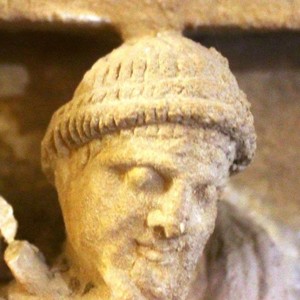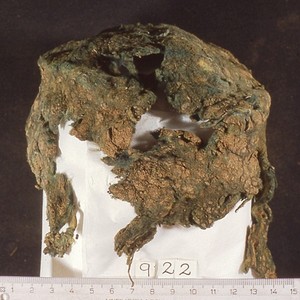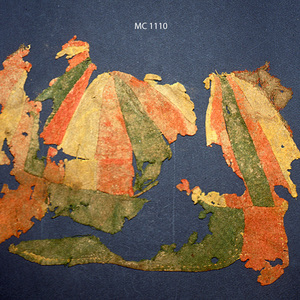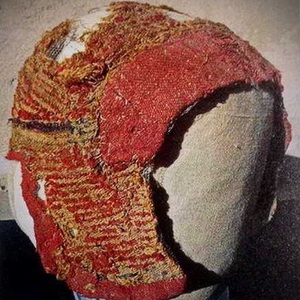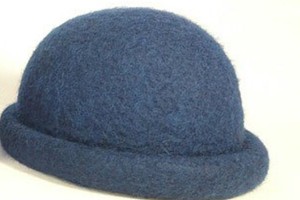Liner
The underhelmet is a small cap that was worn under the helmet to cushion blows. The helmet protected against stabbing or cutting blows and fatal injuries, but without an underhelmet, the warrior was threatened with concussion or stun. For the manufacture of underhelmets in antiquity, fabric and felt bases were used, which were sometimes glued directly into the helmet.
The earliest mentions of underhelmets can be found among the Etruscans and ancient Greeks.
Most underhelmets and similar caps have been found by archaeologists in Egypt, although it cannot be confidently asserted that all of them were used specifically as underhelmets. Among the finds is a cap made of green felt, and a cap made of triangular pieces of red, green, and yellow fabric. Both finds are dated to the beginning of the 2nd century. An interesting example is a cap from Didymoi with cheekpieces, repeating the shape of the helmet, which is evidence in favor of its use as an underhelmet.
There are also several pictorial sources where legionnaires stand in headgear that could be both underhelmets and ordinary caps. There is mention of such headgear in written sources, Ammianus Marcellinus (359 AD) writes:
"The heat caused us a terrible thirst, and for a long time we crawled in search of water and finally found a deep well. Its depth did not allow us to descend into it, we had no ropes, extreme need suggested us to cut the linen dress in which we were dressed, into long strips; tying them, we attached a woolen cap to one end, which one of us wore under the helmet; lowering it into the well and letting it soak up water like a sponge, we quenched the thirst that tormented us".
Reenactment
The underhelmet is made of felt (felted sheep's wool) or several layers of fabric. It is tailored individually, taking into account the size of the head and the shape of the helmet. The main thing is the convenience of wearing and cushioning properties: the helmet should fit snugly and well dampen blows to the head with a properly selected underhelmet. Caps, sewn similarly to ancient underhelmets, can also be used as regular headgear.
Related topics
Roman Army helmets, Legionnaire, Hoplite, Celts, Gladiator helmets, Helmets of the ancient Greeks, Helmets of the ancient Greeks

